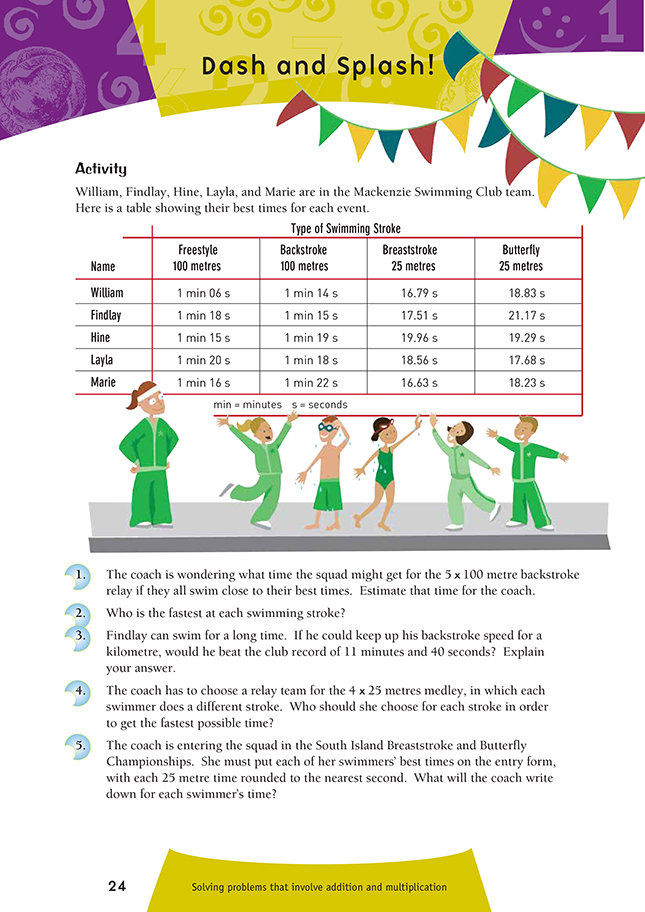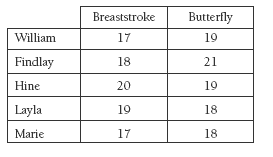This is a level 4 number activity from the Figure It Out series. It relates to Stage 7 of the Number Framework.
A PDF of the student activity is included.
Click on the image to enlarge it. Click again to close. Download PDF (250 KB)
add decimal numbers
order decimals to 2 decimal places
FIO, Level 3-4, Number, Book 2, Dash and Splash! page 24
This activity relies on advanced multiplicative strategies and involves estimation, rounding, addition, and multiplication, some with decimals. The swimming context involves length, time, and rates.
In question 1, the students are asked to estimate. To discourage them from precisely adding the times, have them share their strategies. These could include rounding and compensation, looking for the nearest multiple of 10, and looking for compatible numbers. You may have to remind them that there are 60 seconds in a minute (not 100), so when the seconds total more than 60, the next minute starts. (This also applies to question 3.)
In question 3, Findlay swims 100 metres backstroke in 1 minute and 15 seconds. A kilometre is 10 times greater than 100 metres, so the time should also be multiplied by 10: this can be seen as either 750 seconds or 10 minutes and 150 seconds, both of which amount to 121/2 minutes.
In question 4, the students need to select the fastest swimmer for each stroke, remembering that each swimmer can swim only once. (This is not stated, but is generally the case.)
Question 5 involves standard rounding procedures to the nearest second (0.5 or greater “rounded up”).
Answers to Activity
1. Estimates should be between 6 min 25 s and 6 min 30 s. (Their best times add up to 6 min 28 s.)
2. Freestyle: William
Backstroke: William
Breaststroke: Marie
Butterfly: Layla
3. No. 1 min 15 s x 10 = 750 s or 12 min 30 s. This is more time than 11 min 40 s, so he would not beat the club record.
4. Freestyle: William; backstroke: Findlay;
breaststroke: Marie; butterfly: Layla.
Note: William is by far the best freestyle swimmer, so he should be chosen for this stroke rather than for backstroke. Findlay’s best time for 100 m backstroke is only 1s slower than William’s.
3.

